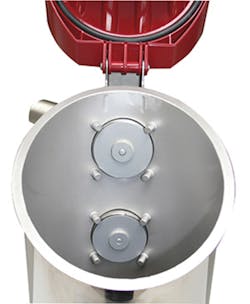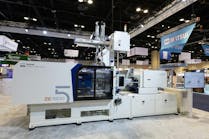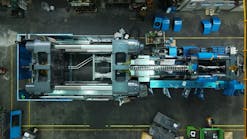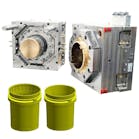Plastics get plenty of bad press as a marine pollutant, but a 24-year-old program to contain pellet debris has won fans in the environmental community for tangible, significant success. Many of the early gains came from better housekeeping practices across the plastics supply chain, but incremental improvements are still coming, thanks in part to advances in resin-handling equipment.
"Operation Clean Sweep is a program in which we provide the tools to any company that may want them that provide best practices to make sure that plastic pellets don't escape out of their plant into the marine environment," said Patty Long, director of industry affairs at SPI, the plastics industry trade organization based in Washington, D.C.
Housekeeping steps include moving stray pellets into recycling bins and not into storm drains; using physical barriers such as booms to catch pellets after spills; automatically closing hose valves; immediately cleaning up spills; and sealing bulk containers. In the old days, veterans say that it was not unusual to see pellets left in piles outside a plant near rail-car unloading stations. Rarely is that the case anymore.
Nearly 200 companies in North America have signed a pledge to participate in Operation Clean Sweep. The American Chemistry Council, Washington, D.C., which represents resin producers and logistics providers, is also a partner. Long said that industry groups across the globe are also participating. SPI has translated manuals into Chinese, Portuguese and other languages.
A 2011 report commissioned by the California Ocean Protection Council found for California "a 50 percent reduction (by count) in pellet discharge to the environment during dry weather, demonstrating the success of many of the BMPs under Operation Clean Sweep." BMPs is an acronym referring to best management practices. Pellet contamination is worse in wet weather because catch basins can overflow.
Scientists from the Sea Education Association, Falmouth, Mass., have reported significant decreases in pellet pollution in the northern Atlantic Ocean, and attributed the improvement to the industry's pellet-retention program, which began in 1992 in partnership with environmental groups.
The role of equipment companies is also increasing. "We've made the equipment easier to clean, meaning that when you open the door, there aren't 3 pounds of pellets falling on the floor," said Michael Stark, divisional manager, material handling and auxiliaries at Wittmann Battenfeld Inc., Torrington, Conn. One example is a central vacuum receiver with a flip-top lid and an easy-to-remove filter. Other auxiliary equipment suppliers offer machinery with similar features. An angled canister on a central vacuum receiver from Conair Group, Cranberry Township, Pa., facilitates easier access and cleaning. Filterless, hinged-lid vacuum receivers from Novatec Inc., Baltimore, also allow quick cleanout. Maguire Products Inc., Aston, Pa., offers filterless Clear-Vu receivers that include a patent-pending, fast-action slide gate that prevents accidental leakage.
The features fit into an industry trend to make equipment easier to use while reducing waste. The motivation is not strictly environmental, but significant reduction of waste from auxiliary equipment is a side benefit.
There are other examples of a collateral environmental benefit from improved equipment, such as pelletizers. The Optimized Temperature Pelletizing (OTP) process from Maag Automatik Inc., Charlotte, N.C., slashes production of off-spec pellets that could end up in waste streams, Maag said.
Proper use of equipmentis also important
Chuck Thiele, president of the Kalamazoo, Mich., consulting company Vactec LLC, and a 40-year veteran of the plastic conveying business, said conveying systems can create problems. "Conveying systems would seem to contain spillage and pellet waste, but in fact, they can be a big contributor [to waste] if the right precautions are not taken," he said.
One issue is spillage at the manifold or material selection station due to material remaining in flexible hose sections. Thiele recommends eliminating the flexible hose and using proprietary manual or automatic flex-hose-free manifolds.
Link Conveying Connections, a Kalamazoo company recently formed by Thiele and Walter Kramer, former head of Motan GmbH, plans to introduce an approach that eliminates the flex hose. It will be available this summer in manual or fully automatic models.
Thiele also said that resin left in machine hoppers during a material change can be a problem. "A machine with a 10 pounds-per-hour throughput may have a hopper with a 30- to 50-pound capacity. If that hopper has 30 pounds sitting in the hopper ... and a material change is required, you need to get the material back to the dryer, bin or gaylord."
Thiele said the solution is to load small batches and use a batch counter that indicates when to stop the run. "Weighing the material in batches prior to conveying is an even better method, and it will tell you exactly how much material has been conveyed to a specific machine so you can stop conveying when you have fed the appropriate amount. This will greatly reduce the residual material in the machine hopper and end, or at least greatly reduce, pellet waste."
One company is even using 3-D printing to reduce pellet loss. D.R. Joseph Inc., Arlington, Texas, designed and 3-D printed a screen that attaches to a floor sweeper. "It catches the resin when we're draining the floor sweeper; we don't dump it into the waterway," said CEO Daniel Joseph.
Doug Smock, senior correspondent
Contact:
Conair Group, 724-584-5500, www.conairgroup.com
D.R. Joseph Inc., 817-987-2030, www.drjosephinc.com
Link Conveying Connections, http://linkconveyingconnections.com
Maag Automatik Inc., 704-716-9000, www.maag.com
Maguire Products Inc., 610-459-4300, www.maguire.com
Novatec Inc., 410-789-4811, www.novatec.com
Operation Clean Sweep, https://opcleansweep.org
SPI, 202-974-5200, www.plasticsindustry.org
Vactec LLC, 269-599-3975, www.vactecusa.com
Wittmann Battenfeld Inc., 860-496-9603, www.wittmann-group.com







